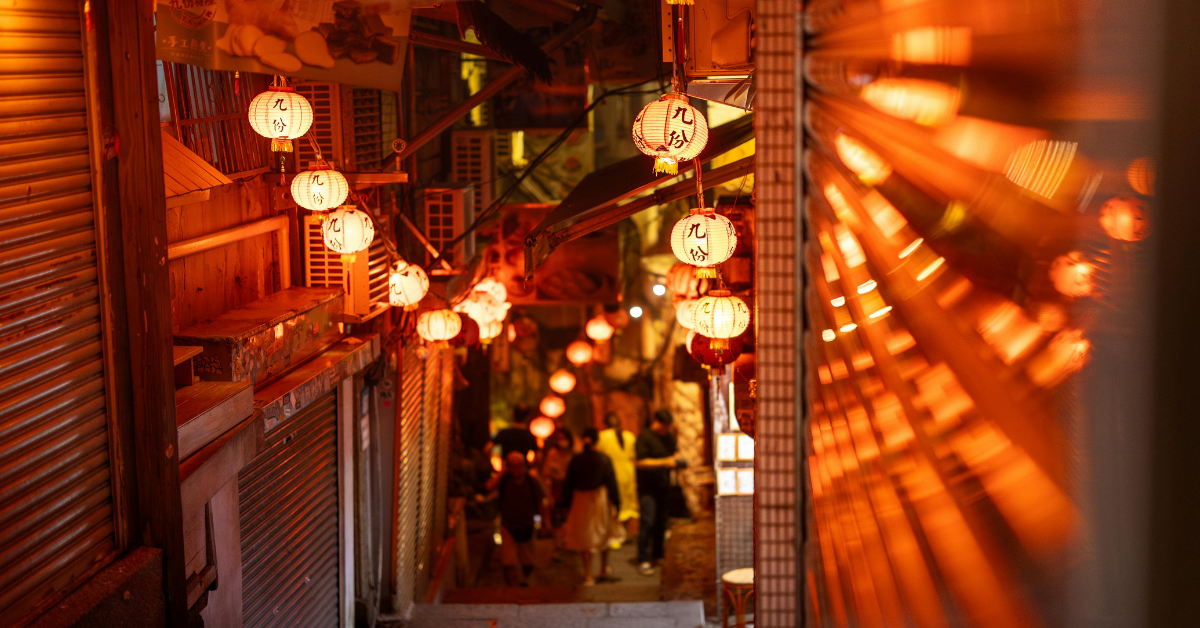In the Entertainment District Arc of Demon Slayer, the story is set in Yoshiwara, a district that actually existed in Tokyo. While its glamorous past is gone, the traces of its history remain, allowing fans to connect more deeply with the world of the series. Walking through Yoshiwara today offers both cultural discovery and a unique pilgrimage for anime fans.
What Was Yoshiwara
Yoshiwara was an officially licensed red-light district by the Edo shogunate and served as a major social hub visited by commoners, samurai, and wealthy merchants alike. At night, the lattice windows glowed with light, and the sounds of shamisen filled the streets, creating a mesmerizing scene.
The townscape and nightlife depicted in Demon Slayer are rooted in this historical reality. For fans, learning about Yoshiwara’s history while walking through its remains enhances the significance of a pilgrimage to this sacred site.
History of Yoshiwara
The origins of Yoshiwara date back to the early Edo period. It was officially established in 1617 and later relocated to the north of Asakusa after devastating fires. The relocated district became known as Shin-Yoshiwara and flourished as Edo’s representative pleasure quarter.
The historical timeline can be summarized as follows:
| Year | Event |
|---|---|
| 1617 | Yoshiwara established near Nihonbashi |
| 1657 | Destroyed in the Great Fire of Meireki, relocated to the north of Asakusa (Shin-Yoshiwara) |
| Late Edo | Courtesan culture thrived, inspiring ukiyo-e prints and kabuki plays |
| Meiji era | Decline due to social reforms |
| Early Showa | Function as a red-light district ended |
This historical evolution gives Demon Slayer’s Entertainment District Arc an added sense of realism.
Features and Appeal of Yoshiwara
Yoshiwara was more than a place of entertainment. It was also a cultural hub and intersection of Edo’s arts and society. High-ranking courtesans, known as oiran or tayu, were skilled in arts and literature, offering intellectual as well as social exchanges.
Key features of Yoshiwara include:
| Feature | Description |
|---|---|
| Social role | Social hub, entertainment venue, cultural center |
| Artistic influence | Inspired ukiyo-e prints, kabuki plays, and literature |
| Streetscape | Lattice-lined buildings glowing with lantern light |
| Human drama | A unique society where courtesans, townspeople, and samurai intersected |
These aspects resonate with the human drama and relationships depicted in Demon Slayer, enriching the narrative depth.
Yoshiwara Today
The dazzling spectacle of Yoshiwara is no longer visible, but its traces can still be found in local shrines, street names, and historic sites.
Yoshiwara Shrine, once worshiped by courtesans and locals, still attracts visitors today who pray for prosperity and good fortune. Street names like “Senzoku” and remnants such as the former site of the Yoshiwara Great Gate preserve fragments of the past.
Walking through the area offers a curious blend of modern downtown quietness and lingering echoes of Edo’s vibrant nightlife.
Highlights of a Yoshiwara Walk
To fully appreciate Yoshiwara, visitors should explore sites that preserve its history and cultural memory.
| Highlight | Feature |
|---|---|
| Yoshiwara Shrine | Worshiped by courtesans and townspeople, still popular for prayers of prosperity and relationships |
| Benzaiten Pond site | Place where courtesans are said to have prayed |
| Senzoku Street | Current entertainment street that retains echoes of the past |
| Ukiyo-e Museum | Exhibits artwork that depicted Yoshiwara’s splendor |
For fans and history enthusiasts alike, walking through these sites connects the history of Yoshiwara with the world of Demon Slayer.
Cultural Impact of Yoshiwara
Yoshiwara left a profound mark on Japanese art and culture. High-ranking courtesans, especially tayu, were not only companions but also performers of dance, poetry, and tea ceremony, making them cultural figures in their own right.
| Cultural element | Role in Yoshiwara |
|---|---|
| Ukiyo-e prints | Captured the glamour of Yoshiwara and spread Edo culture |
| Kabuki plays | Often set in Yoshiwara, dramatizing its unique society |
| Literature | Novels and poems reflected interactions between courtesans and clients |
| Performing arts | Courtesans themselves performed dances and music |
These artistic and cultural influences are echoed in the vibrant and detailed depictions of the Entertainment District Arc in Demon Slayer.
Demon Slayer and Yoshiwara
The Entertainment District Arc of Demon Slayer is closely modeled on the historical Yoshiwara. The glowing lanterns, lavish buildings, and bustling nightlife scenes mirror the real district’s allure.
The struggles and relationships portrayed in the story also reflect the human drama that naturally emerged within Yoshiwara’s unique social setting. For fans, visiting the district offers more than sightseeing—it becomes a way to experience the historical and social depth that underpins the series.
Conclusion
Yoshiwara was a real district that flourished from the Edo to early Showa period and served as the inspiration for Demon Slayer’s Entertainment District Arc. While the grand spectacle is gone, its traces remain in shrines, street names, and local heritage.
Visiting Yoshiwara allows one to explore Edo’s rich cultural history while also deepening appreciation of Demon Slayer. The pilgrimage is more than tourism—it is a bridge between history and storytelling, offering fans a chance to immerse themselves in both reality and fiction.






